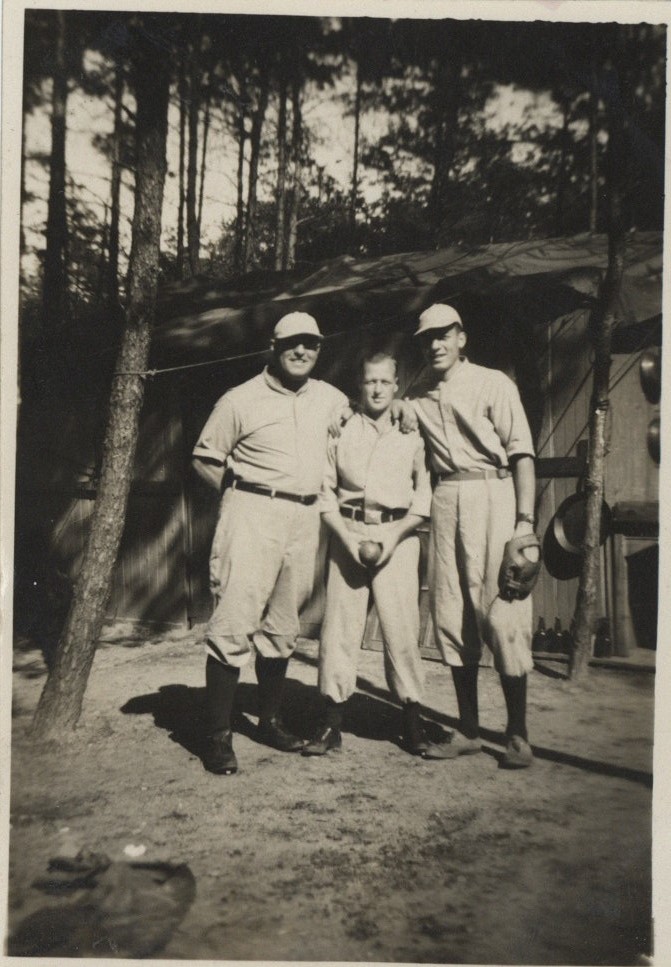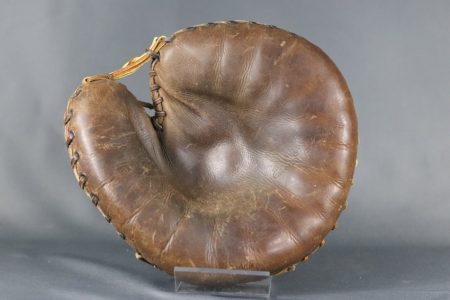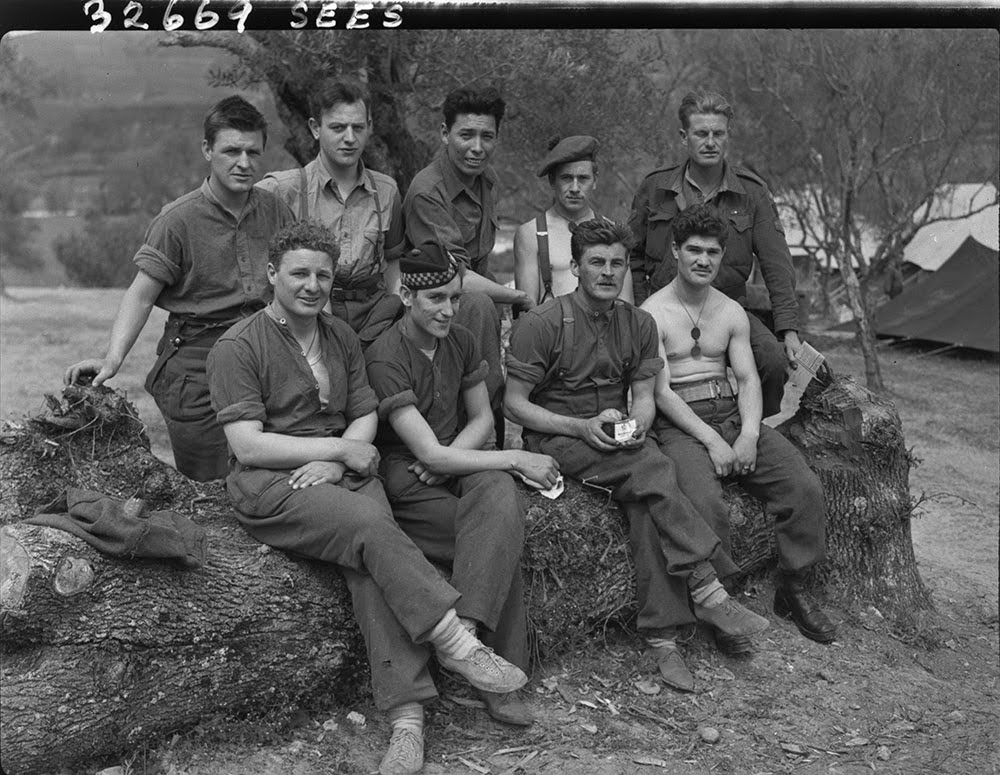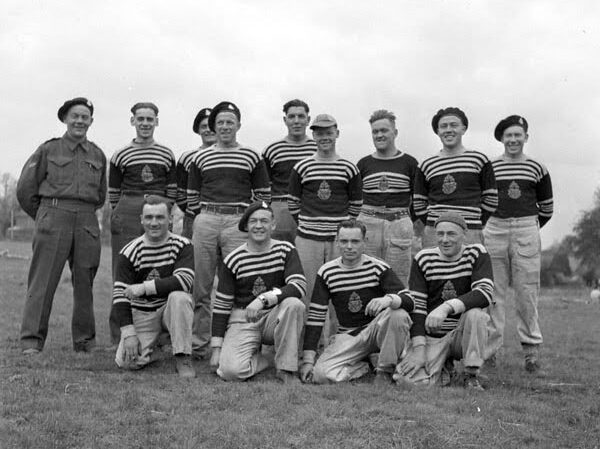
While Canadians back home were supplying the war effort, worrying about their loved ones, and trying to hold on to a sense of normal life through enjoyment of sports and recreational activity, Canadian soldiers overseas were equally engaged in baseball and softball.
Throughout the Second World War, baseball remained popular overseas among soldiers who, with lots of free time between training and combat engagements, wanted a taste of the fun and competitiveness of baseball. Fundraising games, exhibition games, leagues, and championships were all played across Wartime Europe, including in the United Kingdom, France, Netherlands, Belgium, Germany, and more. There is even evidence that some Canadians may have played ball in the North African theatre of war.
Baseball and softball played overseas meant as much to the spectators as it did to the players. Diverse crowds of soldiers, civilians, and even members of the British Monarchy on occasion, gathered to watch the games played in various settings, from English cricket grounds, or football pitches like Wembley Stadium, to empty fields and pastures. While many soldiers played simply for fun and to pass time, the countless skilled (and many professional) players who had also found their way into the war, had allowed for competitive games and leagues, and brought with them the desire to win.
Numerous baseball and softball teams would exist throughout the course of the war within the enlisted ranks, competing fiercely amongst themselves for league titles, or just for the fun of it. As the demand for personnel increased and enlisted numbers swelled, more teams and more players would join the ranks of the overseas ballplayers. Teams formed within ranks, divisions, and locations, and those teams would often compete amongst themselves.

It was also common for the teams to scoop up prospective talent coming overseas from Canada, meaning that some teams, and ultimately some companies, would be full of Canadian baseball (and sports) talent! Take the Royal Canadian Artillery’s Sportsman’s 30th Battery Bombers, for example. Led by Conn Smythe (founder of the Toronto Maple Leafs (NHL), namesake of the trophy awarded to the NHL’s top playoff performer), the 30th Battery Bombers softball team was filled with professional baseball, hockey, lacrosse, and football players. The softball team recorded 110 wins in 114 games while serving in Belgium.
Canadians also participated in inter-army matchups against American and European baseball teams alike. With mixed success in major matchups against the American army teams (often fundraising games), Canadian teams were overall decently successful within their league play, which typically featured teams of multiple nationalities, and would occasionally bring home a big-game victory against some dominant (and talent-filled) American teams. At least 12 of these all-star style games, which usually featured former or current professional North American players from across the branches of the military, were played throughout the war.


















